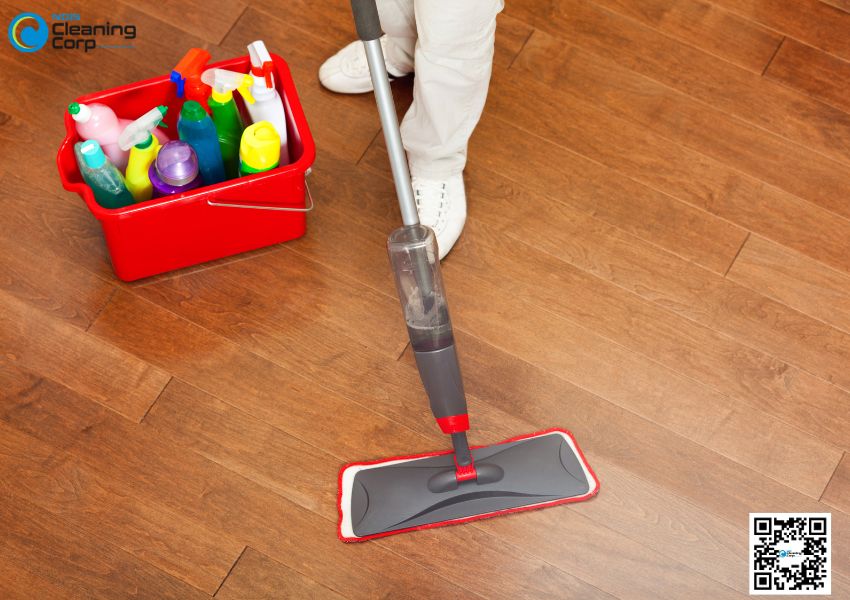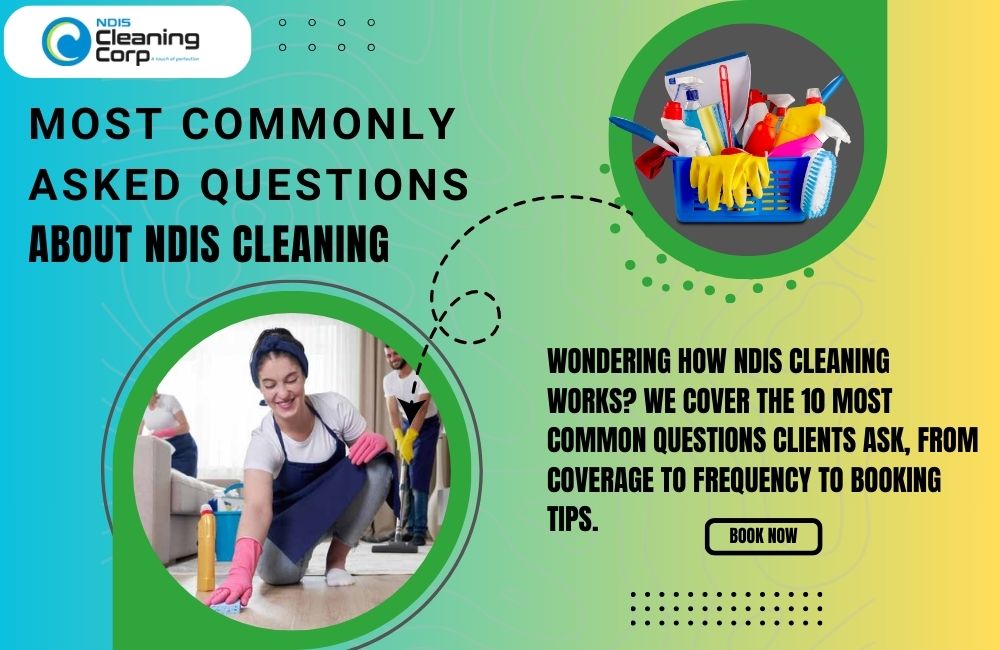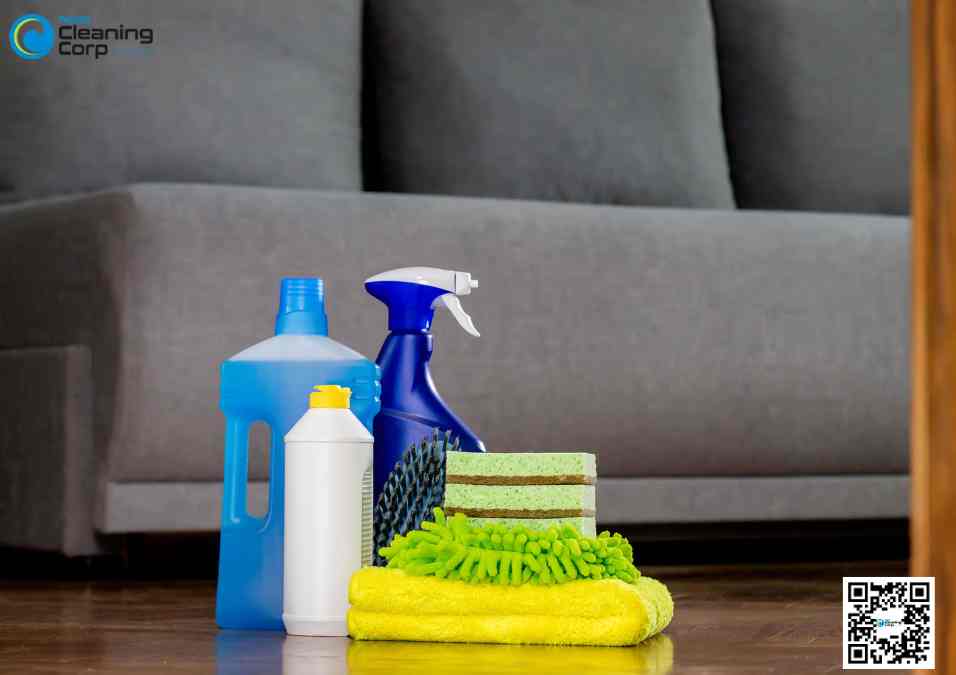Does the NDIS Fund Cleaning Services?
Yes. The NDIS does fund cleaning services — but it...
Accessible cleaning plays a crucial role in the lives of NDIS participants, especially for those with mobility impairments. When services are tailored to the specific needs of individuals with disabilities, they do more than just clean—they create environments that foster independence, safety, and well-being.
According to a study by the University of Sydney, individuals with mobility challenges are at a 40% higher risk of home accidents, such as slips and falls, compared to the general population. This highlights the importance of accessible, well-maintained living spaces for NDIS participants. NDIS-approved cleaning services help mitigate these risks by ensuring that homes are kept free of hazards like dust, clutter, or slippery surfaces.
For individuals with mobility impairments, accessing hard-to-reach areas, moving furniture, or even performing simple cleaning tasks can be physically exhausting or even dangerous. This is why NDIS cleaning services are tailored to the unique needs of each participant, focusing on maintaining a clean and healthy living environment without compromising their safety or dignity.
NDIS services are designed to support participants’ overall well-being by creating accessible spaces. Cleaners may use adaptive tools and specialized equipment to ensure that living areas remain clutter-free and accessible. This not only enhances the quality of life but also ensures that participants feel safe and secure in their homes.

Jane’s story provides a real-life example of how NDIS cleaning services can dramatically improve the quality of life for a participant. Jane, who lives in Melton, uses a wheelchair and has limited mobility in her upper body. Before receiving tailored cleaning services, she struggled to maintain her home. Tasks like cleaning high shelves, vacuuming under furniture, and reaching kitchen counters were simply beyond her physical capabilities.
Recognizing her unique needs, her NDIS cleaner adapted their approach. They used long-handled cleaning tools, allowing them to reach high surfaces without Jane needing to assist. They adjusted their cleaning schedule to accommodate Jane’s routine, visiting during times that worked best for her physical and mental health. This level of personalization in NDIS-approved cleaning services ensured that her home remained clean and accessible without causing unnecessary stress or exhaustion.
Jane’s cleaner also focused on areas that posed potential safety risks, such as slippery floors and cluttered pathways. By maintaining these spaces, they reduced Jane’s risk of falls, which are statistically one of the leading causes of injury among wheelchair users. According to a report by Occupational Therapy Australia, individuals with mobility impairments have a 60% increased risk of falling in cluttered spaces compared to those without disabilities.
These adaptations allowed Jane to live more independently, enhancing her overall well-being and mental health. She no longer worried about maintaining her home, and her cleaner’s efforts directly contributed to improving her quality of life. The service not only kept her home clean but also provided her with the dignity and independence she deserved.
The use of adaptive cleaning tools is crucial for providing effective NDIS cleaning services to individuals with mobility challenges.
Long-handled brooms, lightweight vacuums, and ergonomic mops are examples of tools that can be modified to accommodate individuals with limited mobility. These tools allow cleaners to reach high or difficult areas without requiring the participant to engage physically, which can be exhausting or impossible for those with severe mobility impairments.
Ergonomic tools are designed to reduce strain on the user’s body, making cleaning tasks more manageable. According to research by the University of Melbourne, using ergonomic tools can reduce the physical strain associated with cleaning tasks by up to 30%, which is significant for individuals with limited strength or dexterity.
Non-slip and non-toxic cleaning products are another important consideration. For individuals with mobility impairments, spills and residues from cleaning agents can create additional hazards. Using non-slip products minimizes the risk of accidents, while non-toxic solutions ensure that harmful chemicals do not pose a risk to those with compromised immune systems or respiratory conditions. A study published in the Journal of Environmental Health found that non-toxic cleaning agents are 50% less likely to cause health problems compared to conventional cleaners, underscoring their importance in accessible cleaning.
An effective NDIS plan involves creating a personalized cleaning plan that addresses each participant’s unique needs. For example, individuals with limited hand mobility may struggle with tasks like wiping surfaces or vacuuming. Tailoring the cleaning plan to include additional support for these tasks ensures that the participant receives comprehensive care.
Support providers play a key role in developing these plans. By working closely with participants, they can identify specific mobility challenges and adjust cleaning services accordingly. For instance, an individual with difficulty reaching high places might need a cleaner who uses extendable tools or equipment that can adjust to various heights.
Personalized cleaning plans also involve scheduling adjustments. For example, individuals who experience fatigue may benefit from cleaning services scheduled at times when they are least tired. This consideration can make the cleaning process more manageable and less taxing on the participant.
Navigating narrow spaces and reaching high surfaces are common challenges faced by individuals with disabilities. For instance, a participant using a walker or wheelchair might find it difficult to maneuver around furniture or clean behind appliances.
NDIS cleaning service providers can address these challenges by employing specialized techniques and adaptive tools. For example, using vacuum attachments designed for tight spaces or employing extendable dusters can help reach areas that are otherwise inaccessible. According to a report by Disability Services Australia, using adaptive equipment in these scenarios can improve cleaning efficiency by up to 40%.
Safety precautions are also critical. To reduce fall risks, cleaners should use non-slip cleaning solutions, secure loose rugs, and ensure that furniture is easy to move. Regularly removing clutter and ensuring that pathways are clear can significantly reduce the risk of falls. The Centers for Disease Control and Prevention (CDC) report that home modifications aimed at improving accessibility can reduce fall risk by up to 50% in individuals with mobility impairments.
Accessible cleaning in the context of NDIS services involves tailoring cleaning processes to meet the unique needs of individuals with disabilities. This approach ensures that the living environment is not only clean but also safe and accessible. For instance, cleaners may use tools and methods specifically designed to accommodate mobility impairments, such as long-handled brooms or ergonomic mops. The goal is to create an environment that supports the participant’s independence and well-being, minimizing any barriers that might affect their daily living.
NDIS services can be adapted for different mobility needs by customizing various aspects of the cleaning process. Service providers can adjust cleaning tools and techniques based on the participant’s specific mobility challenges. For example, individuals with limited reach might benefit from extended cleaning tools, while those with reduced strength might need lighter equipment. Additionally, cleaning schedules can be tailored to accommodate the participant’s routine and energy levels, ensuring that the cleaning tasks do not interfere with their daily activities. This personalized approach ensures a safe and effective cleaning process.
Cleaning tools suitable for individuals with limited mobility include:
According to a study by the University of Sydney, using ergonomic and adaptive cleaning tools can improve cleaning efficiency by up to 35% for individuals with mobility impairments. These tools help reduce the physical demands of cleaning, making it more accessible and manageable for those with specific needs.
Cleaning for accessibility is crucial for safety because it minimizes the risk of injuries such as slips and falls. An accessible cleaning service ensures that homes are clutter-free and that cleaning practices prioritize safety. For example, using non-slip cleaning products and securing loose rugs can prevent accidents. The Centers for Disease Control and Prevention (CDC) emphasize that reducing hazards in the home environment can significantly decrease the risk of falls, which are particularly dangerous for individuals with mobility challenges. Ensuring that living spaces are regularly cleaned and maintained enhances overall safety and helps participants maintain their independence.
Providing cleaning services tailored to the specific needs of NDIS participants is essential for ensuring their safety, independence, and overall well-being. By utilizing adaptive tools, modifying cleaning plans, and addressing the unique requirements of individuals with mobility impairments, NDIS service providers can make a significant impact on the quality of life for their clients. Accessible cleaning goes beyond mere tidiness; it supports individuals with disabilities in living with dignity and autonomy in a safe, clean, and well-maintained environment.
More Post

Yes. The NDIS does fund cleaning services — but it...

Alright, let’s get straight into it. These are the questions...

NDIS cleaning services are specifically designed to cater to the...

The role of professional cleaning in maintaining a safe and...

Studies consistently show that living in a clutter-free, organized space...